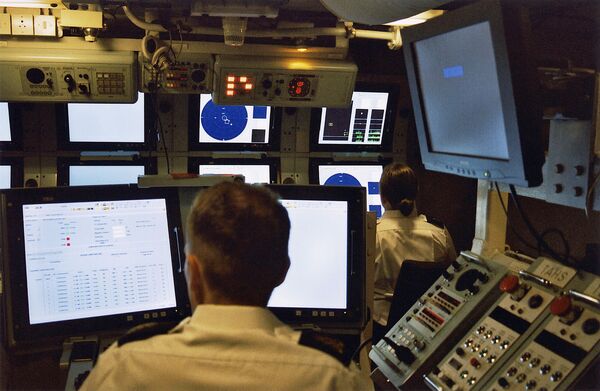
Sonar 2087 equips eight RN Type 23 frigates. Pictured here is the sonar room of HMS Westminster – the sonar director is nearest to the camera, with the four dual-screen sonar operator consoles ranged behind. (NAVYPIX/Richard Scott)
Thales UK is set to start rolling out a package of enhancements for the Sonar 2087 low-frequency active/passive variable depth sonar equipping the Royal Navy's (RN's) eight anti-submarine warfare (ASW)-optimised Type 23 frigates under a phased capability insertion project (CIP).
The iterative fast-track upgrade, for which Thales was awarded a GBP110 million (USD134.506 million) Sonar 2087 Design Authority Capability Insertion Project (S2087 DA-CIP) contract in September 2022, forms part of the RN's wider ASW Spearhead programme. A first enhancement delivered under the CIP will be installed as part of routine ship maintenance/upkeep following a successful sea trial in January 2023.
Developed by Thales UK, the Sonar 2087 system adopts a low-frequency active variable depth sonar common to the proprietary Thales CAPTAS-4/UMS 4249 low-frequency active/passive sonar, but differs in that it additionally integrates a very-low-frequency passive towed array and a UK-developed software suite. Achieving initial operating capability in November 2007, Sonar 2087 remains the surface fleet's principal long-range ASW sensor and will be carried forward into the RN's new Type 26 frigates.
Intended to enable the RN to maintain an edge against a qualitatively improving submarine threat, the ASW Spearhead programme has been structured as a rapid capability delivery initiative to enable new software-based functionalities to transition to the front line much faster than traditional processes allow. These enhancements will address a number of areas, including improved detection and tracking, enhancements to the operator human-computer interface, and new decision aids and training tools.
Looking to read the full article?
Gain unlimited access to Janes news and more...







